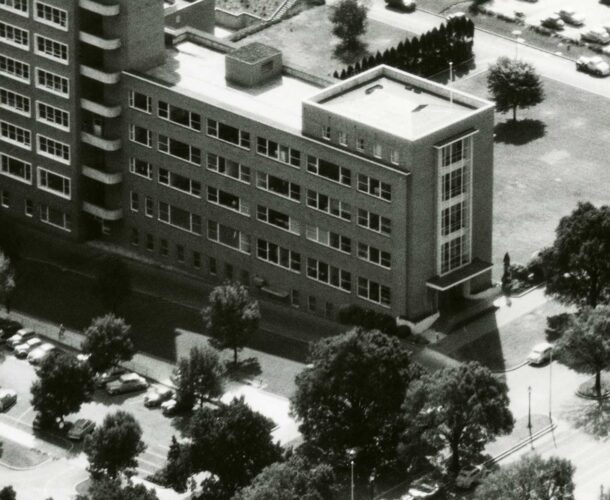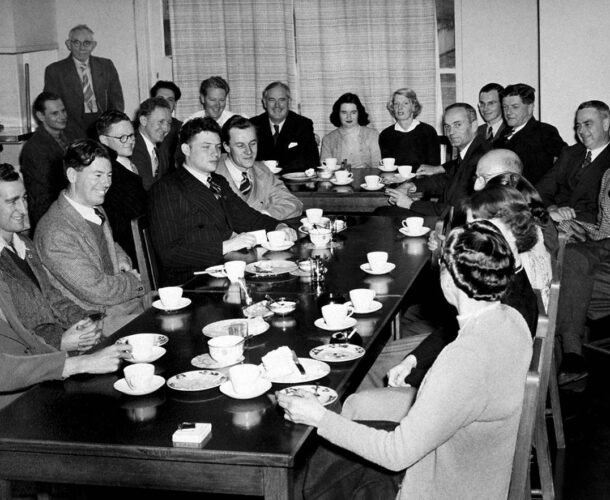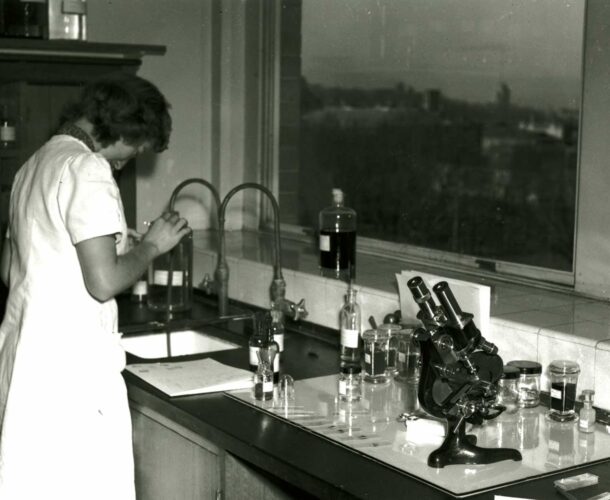The Royal Melbourne Hospital moved to a modern building with updated facilities on its Parkville site in 1941. Parkville provided space for an expanded hospital, and situated the main teaching hospital in close proximity to the University of Melbourne medical school.
Three years later the Walter and Eliza Hall Institute relocated to the Parkville site, taking up residency in purpose built laboratories adjoining the hospital on Royal Parade.
This accumulation of the University of Melbourne, the Royal Melbourne Hospital and the institute would be the beginning of the Parkville medical research precinct.
Designing the new building
With the architects, institute director Dr Charles Kellaway set out to produce a functional building that catered for the institute’s scientific requirements.
Sir Frank Macfarlane Burnet describes how the organisation’s structure influenced the building:
“The division of the institute into physiological, biochemical and virological departments was confirmed by providing each with an appropriately divided floor. The working laboratories were on the south side with windows filling most of the south wall. The various service rooms were on the north side of the central corridor and there were extensive basement areas for heavy equipment.”1
Funding the construction
The Royal Melbourne Hospital had been given funding to provide the institute with adequate buildings at Parkville. However, the estimate for the cost of the hospital build was considerably above what has been provided by the government and Kellaway was required to find funds to meet the institute’s construction costs.
“Kellaway had made influential friends in the sixteen years he had been director and they stood by him”2. With generous donations from individuals and organisations, Kellaway raised nearly half of the total cost of £47,000 for the institute construction.
Moving into Parkville
The occupation of the new institute building has been a gradual process. Beginning with the biochemical department and the virus department. The remainder of the institute, including the physiological and media departments has now relocated to the new building.
“During the transition period, we received much help from Mr Arthur Hughes, who gave up much of his limited spare time in setting up apparatus in the new building, making new pieces of equipment and advising us on many mechanical matters.”3
In addition, the spaciousness of the new building has allowed the institute to set aside a small laboratory for the use of Lieutenant Colonel Ian Mackerras, AAMC, Director of Entomology, and his colleagues for entomological studies.







